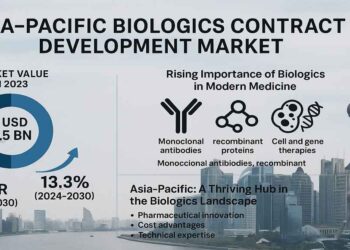Artificial intelligence (AI) is no longer a solution to be theorized for drug discovery and clinical development, but rather a transformative tool that is changing the very structure of each the pharmaceutical and healthcare industries. The integration of AI into these domains has opened up unprecedented opportunities, sparking efficiency, precision, and innovation across the pipeline of drug development. AI is becoming a driver of accelerated medical breakthroughs. With healthcare systems and pharma companies struggling with skyrocketing costs, long timelines, and a high rate of drug development failure, AI is a plausible solution that will potentially revolutionise the industry.
The Challenge of Traditional Drug Development
Drug development has historically been an inefficient and costly process. The developmental cycle for a single therapeutic is typically around 10–15 years with total costs often surpassing $2 billion. In addition, even with the multiple iterations on drug development, only one in 10 drug candidates makes it through the challenging process into FDA approval, indicating that pharmaceutical R&D has a high failure rate. A large part of this inefficiency arises from the need to go through massive datasets, conduct repetitive preclinical trials, and perform resource-intensive workflows.
Another near impossible approach is to reform clinical trials, which the ATMPs have to pass, accounting for nearly 40% of drug development costs, and are invariably crippled by patient recruitment problems, high attrition rates, and non-compliance. And these inefficiencies delay life-saving treatments and inflate economic pressures on pharmaceutical companies and healthcare systems. Amid this scenario, AI is positioning itself as a disruptive technology that can provide data-driven decision making along with unmatched computational power to solve the legacy challenges of the industry.
AI in Drug Discovery: Early Evidence of Impact
AI to drug discovery application already has measurable progression. Using machine learning and advanced algorithms, AI platforms can rapidly screen large molecular datasets, predict drug-target interactions, and optimize lead candidates like never before. While the traditional drug discovery process is heavily reliant on trial-and-error, AI technology moves the needle from trial-and-error to predictive modeling.
Rapid identification of new therapeutic compound is one of the most promising breakthroughs attributed to AI in drug discovery and clinical development. For example, Insilico Medicine used its AI platform to discover a new candidate drug for idiopathic pulmonary fibrosis in the span of 46 days, whereas this normally would take years to do. Similarly, Atomwise, a leader in AI-driven drug discovery, developed potential inhibitors for Ebola virus proteins by screening more than 7 million compounds in less than one day, demonstrating the unparalleled speed and accuracy of AI algorithms.
AI is also proving pivotal in repurposing existing drugs. During the COVID-19 pandemic, it played a vital role in identifying known compounds with antiviral properties, expediting the development of treatments. By analyzing molecular structures and leveraging predictive analytics, AI algorithms helped narrow down potential candidates from an overwhelming number of possibilities, accelerating the path to clinical trials.
Machine Learning and Precision Targeting
A branch of AI called machine learning is especially powerful at honing drug development precision. Machine learning algorithms can analyze complex datasets and identify patterns used to discover potential biomarkers, determine optimal drug dosages, predict toxicological risk, etc. This capability is particularly groundbreaking in oncology, where machine learning is being used to create targeted therapies that are customized based on specific genetic mutations.
One of the most powerful applications of machine learning is predicting the binding affinities of ligands to proteins — a critical aspect of drug design. Machine learning greatly decreases the chances of late-stage failures by focusing on the most promising molecular candidates. Additionally, the integration of machine learning with next-generation sequencing data allows the identification of genetically defined patient subpopulations, a cornerstone of precision medicine.
AI in Clinical Development: Emerging Trends
The impact of AI is not limited to the front-end drug discovery phase; it is making equally significant advances in clinical development too. One of the most exciting applications is optimization of clinical trial design. These AI-powered platforms can scan old clinical trial data, review patient demographics, and analyze treatment outcomes to help recognize the best protocols for future studies. This lowers the risk of trial failures and speeds timelines.
AI is also proving transformative in terms of patient stratification. The recruitment of suitable patients is often the hardest part of a clinical trial, with as many as 85% of studies failing to recruit sufficient participants. AI algorithms can stratify patients based on genetic, phenotypic, and even behavioral data to ensure that participants are not only eligible, but also likely to show relevant responses to the therapy. By improving trial enrollment and retention, AI directly boosts the probability of success.
AI is also transforming the way patient data is monitored throughout a clinical trial. Most conventional monitoring practices are retrospective and time-consuming, whereas with AI, you can collect and analyze data in real time. Wearable devices calibrated with AI algorithms can record a multitude of biomarkers, offering real-time information about patient health and augmenting safety tracking capabilities. Real-time data analysis also improves adaptive trial designs, allowing researchers to make decisions during trials based on data.
The Role of Natural Language Processing
Natural language processing (NLP) — a subset of AI specifically trained to understand and write what humans say — is being used to great effect in clinical development. NLP algorithms are capable of electronically sifting through unstructured data sources such as electronic health records (EHRs), scientific literature, and clinical trial documents to extract actionable insights. Example uses of NLP systems powered by artificial intelligence include identifying leads in drugs by scanning millions of patents and research articles for use of a particular drug.
In addition, NLP is transforming pharmacovigilance — the monitoring of adverse drug consequences. NLP algorithms can review patient feedback, and clinician reports to detect safety issues earlier in the development process thereby reducing risks and costs.
Challenges and Ethical Considerations
AI in drug discovery and clinical development has immense potential as well, however is not without its challenges. The quality and heterogeneity of biomedical data is one of the key challenges. To generate converging results, AI algorithms require big, curated datasets — a currency that is frequently few and far between. Data security and patient privacy are major concerns as well, especially as AI systems become more integrated with sensitive healthcare data.
The implementation of AI is compounded by ethical considerations. Algorithmic biases, which are rooted in unbalanced datasets, can yield biased results and amplify health inequities. This is crucial for establishing trust and confidence among undesirable stakeholders, such as healthcare professionals, regulators and patients, which are critical to the trustworthiness of artificial intelligence systems.
The Road Ahead: AI’s Transformative Potential
The early evidence around the role of AI in drug discovery and clinical development is compelling but the true potential has only begun to unfold. With increasingly sophisticated algorithms and better data integration, AI applications will simply continue to grow. New frontiers in quantum computing hold a great potential when further integrated with AI for molecular modeling and predictive analytics.
Soon, today’s ad-hoc adoption of AI platforms into biopharma workflows will be a competitive necessity. Companies prioritizing AI as a strategic focus will gain a vital competitive advantage that will cut costs, speed up timelines, and advance innovative therapies to patients with greater efficiency.
In conclusion, the convergence of AI and pharmaceutical development marks a transformative era for the industry. AI isn’t just shaping the future of drug discovery and clinical development; it’s defining it—by addressing long-standing inefficiencies and unlocking new potential in science and medicine. With rising investment in AI-driven platforms, the next decade is set to usher in a golden age of innovation wherein technology and human ingenuity can come together to advance health outcomes in the global market.


















